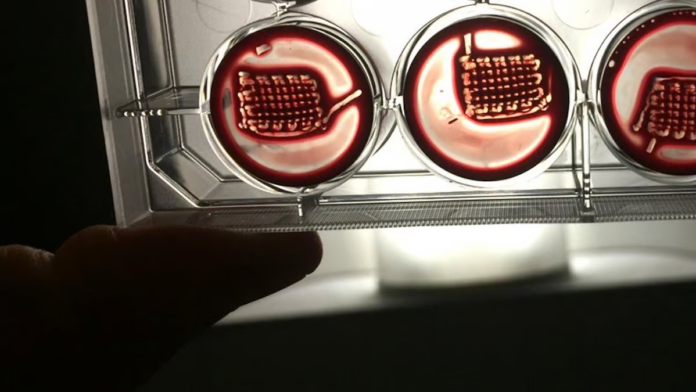Researchers at the University of Nottingham have developed a groundbreaking enhancement to the body’s natural healing process, potentially transforming how injuries and bone fractures are treated. By advancing the concept of regenerative hematoma (RH), these scientists have introduced a method that could elevate the efficiency and scope of the body’s repair mechanisms using patient-derived implants.

The Natural Healing Process
The human body is equipped with an extraordinary capacity to heal itself. From small cuts to minor fractures, it can effectively mend tissues through the formation of a regenerative hematoma, a complex microenvironment responsible for initiating the repair process. This biological system summons critical cells, molecules, and proteins essential for tissue regeneration.
However, there are limits to this natural ability. Severe injuries, significant bone fractures, or degenerative conditions often require external interventions such as surgeries or prosthetics. Enter the Nottingham team’s enhanced RH innovation, a technique that utilizes a patient’s own blood to create bespoke implants for efficient and targeted healing.
Game-Changing Technology
This advanced RH method mimics and amplifies the body’s repair systems. By harvesting key components from the patient’s blood, researchers can fabricate highly specialized implants designed to integrate seamlessly with existing tissues. These implants create an optimal microenvironment, encouraging rapid regeneration of not only soft tissues but also harder, more complex structures such as bone.
How It Works?
At the core of this innovation lies the ability to manipulate blood to form a solid, bioactive scaffold. This scaffold acts as a bridge between damaged tissues, fostering communication between cells and accelerating the repair process. Unlike conventional implants or treatments, this personalized approach ensures higher compatibility and minimizes risks such as rejection or inflammation.
According to lead researcher Dr. Emma Stevens, the implications of this technique are vast. “By using the patient’s own biological material, we are effectively teaching the body to heal smarter and faster. This could significantly reduce recovery times for patients while avoiding complications associated with synthetic materials.”
Potential Applications
The enhanced RH has applications far beyond healing fractures. Its customizable nature allows it to be tailored for a wide range of medical needs, including:
- Orthopedic Surgeries: Accelerating recovery in joint replacements or complex fractures.
- Sports Medicine: Treating ligament tears and tendon injuries.
- Chronic Wounds: Providing new solutions for non-healing ulcers or diabetic wounds.
Moreover, this innovation holds promise for dental implants, cartilage repair, and even spinal injuries.
A Step Towards Personalized Medicine
What sets Nottingham’s RH apart is its alignment with the principles of personalized medicine. Traditional treatments often rely on a one-size-fits-all approach, which can lead to variable outcomes. By creating implants derived directly from the patient, the Nottingham researchers are ensuring a higher success rate and better overall patient experience.
Professor James Carter, co-author of the study, elaborated, “This marks a shift in how we think about regenerative medicine. Instead of forcing the body to accept foreign materials, we are empowering it to rebuild itself with its own resources.”
Public Reception And Next Steps
The medical community has welcomed this development with enthusiasm. Preliminary clinical trials have shown promising results, with patients reporting reduced pain, quicker recovery, and minimal side effects. The University of Nottingham is now working on scaling this technology for broader clinical use, hoping to make it available in hospitals within the next five years.
Public health experts are optimistic about the societal impact of this technology. By reducing dependency on expensive prosthetics and lowering healthcare costs associated with long recovery periods, the enhanced RH could revolutionize patient care globally.
Beyond The Horizon
While the technology is still in its nascent stages, the Nottingham team’s work represents a significant leap forward in regenerative medicine. It underscores the potential of combining biological insights with innovative engineering to unlock new possibilities in healthcare.
As Dr. Stevens aptly summarized, “This is just the beginning. The future of medicine lies in harnessing the body’s innate intelligence to heal and regenerate itself, and we’re thrilled to be a part of that journey.”
Barbara Taylor Bradford may have left a legacy in literature, but breakthroughs like this ensure that scientific advancements continue to shape the narrative of human resilience and progress.


